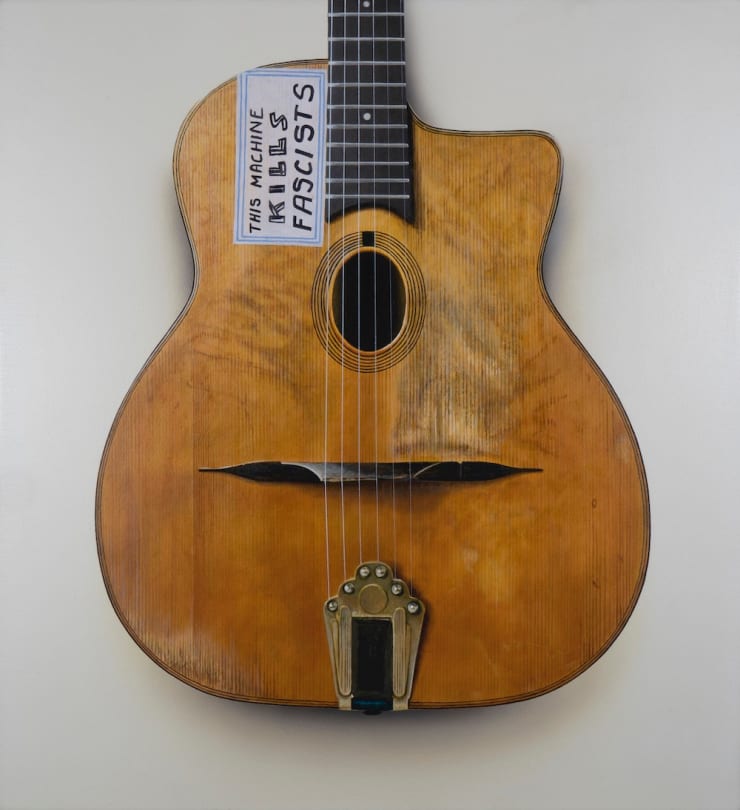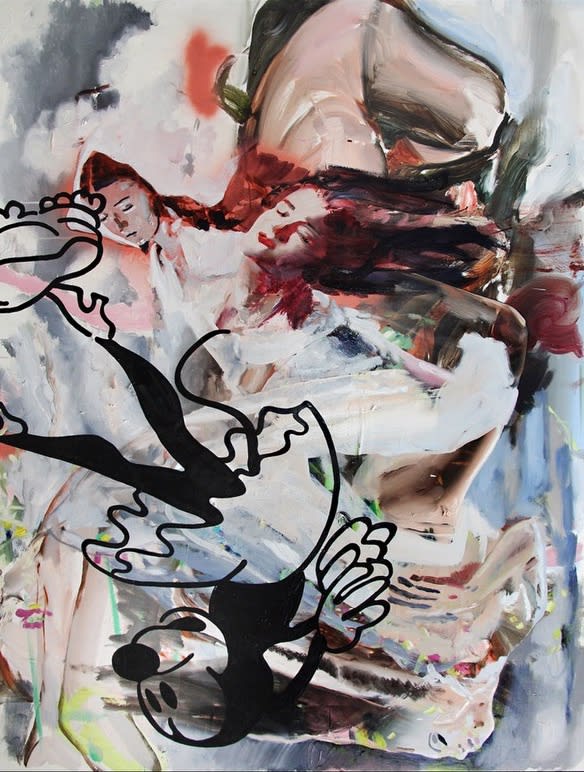An Invisible Piper: Giles Alexander
As the son of an architect, Giles Alexander developed an inherent ability to translate the three dimensional world onto a two-dimensional surface.
Nurtured within the illustrious walls of London’s National Gallery, he cultivated a deep appreciation for the transformative power of painting to capture and transcend physical space and human time. Alexander’s practice has always wondered about ‘us’ and asked how we find a sense of place in a landscape, in the world, indeed in the Universe? His work to date has explored ubiquitous themes of faith, reason, and the cosmos, always creating space for new work to extend an already decades
long exploration into belonging and identity. It’s with this in mind that Alexander now pivots his artistic focus beyond the celestial to perhaps the most universal language of all – music…
With the recent confirmation of Einstein’s gravitational waves showing us that the whole
Universe is humming, we can now begin to appreciate that every star, every planet, every continent, every building, every person is vibrating along to the slow cosmic beat (Frank 2023). It turns out that gravitational waves are more like sound waves in music - so in a way, what’s just been observed for the first time is the song of the universe (Mizrahi 2020). As Einstein mused “Everything is determined by forces over which we have no control. It is determined for the insect as well as for the star. Human beings, vegetables, or cosmic dust - we all dance to a mysterious tune, intoned in the distance by an invisible piper.”
New discoveries are reflected in our cultural accouterments but as Einstein’s quip suggests,
often reveal themselves serendipitously. It beggars belief that we process something as
exquisitely subtle as music using only the most absurdly low-tech tools - bits of bone, lymphy
gunge, tiny bundles of hair. It’s like equipping a spaceship with an engine made of twigs,
rubber bands and cheese. But it flies. (Faber. 2023).
While childhood visual literacy was perhaps genetic for Alexander, the artist was also busy
creating a deep auditory cache – growing up in a house where walls were clad with as many
musical instruments as paintings. Like many of us he subconsciously created a sort of
soundtrack, or playlist to his life. Music psychologist Dr Victoria Williamson says “studies
based on how our memory is triggered from tiny clips of musical tracks have estimated that the average person has tens of thousands of music snippets in their mind’s jukebox by the time they reach adulthood. Just like all memories, music memories are rarely single-sense entities. The same song can have complex multi-sensory associations, which vary wildly from person to person. These additional connected memories can be visual, tactile, even olfactory, immediately transporting you to a particular place, feeling and/or time from your past.” She calls this the, “honey they’re playing our song” phenomenon.
“Anchored in an academic tradition that upholds technical precision and craftsmanship,
Alexander continues to fearlessly transcend his artistic boundaries, deliberately challenging the established norm. This is evident in his continued choice of non-conventional, challenging
subject matter. In doing so, he encourages us to reflect upon the dynamic interplay between
our past and present selves. British art historian, curator and arts broadcaster Kate Bryan says “One cannot help but directly think of Giles Alexander in relation to the maxim Know Thyself. As a painter he belongs to a long standing academic tradition of virtuously handled oil painting and precision draughtsmanship, yet he stands aside from this, quite purposefully drawing attention to moments where he departs from tradition. This is not wilful contrariness; Alexander uses and abuses his polished aesthetic as another way of interrogating his world and questioning all that we hold dear. Alexander has always focused his attentions on real and imagined space, often drawing our attention to the shifting boundaries between the two. There is a visual pun in his paintings between ‘space’ as a crucial component of all painting and ‘space’ the final frontier.”
“Without doubt Bob Dylan’s single greatest influence and the first great voice of protest music was Woody Guthrie. Guthrie famously appeared playing in public with a homemade sticker attached to his weapon of choice, the guitar announcing, ‘This Machine Kills Fascists’. Every guitar sticker thereafter has in some way been a descendent of that gesture. Django Reinhardt was a French Romani gypsy and arguably the first guitar God. Everyone of any note that’s picked up the instrument since has in some way been indebted to and sited him as influence including, Hendrix, Beck, Pass, Benson Lage etc etc. Reinhardt was at the height of his powers during the German occupation of France in WWII. He and Stephane Grappelli and their Hot Club de France had seized the impetus of the Jazz craze that originated in New York and Chicago and created something new, infectious and entirely European. As with all the finer things in life, the Nazi elite loved Django’s music, only catch was his ethnicity and cultural heritage didn’t quite align with the Aryan party manifesto! Despite this for a long time they ‘humoured’ Django’s ‘racial shortcomings’ and he and his bands were smuggled around
Europe to play hi-class events for the German partying elite. Inevitably the wheels came off and Django found himself fleeing for his life and had to traverse the Alps on foot back to the safety of his family. Django played the now iconic French made Selmer acoustic ‘Jazz’ guitar with its distinctive oval sound-hole and flat cut away, with very light construction they were the only alternative to the more common American archtop ‘f’ hole jazz guitar’s. To my mind, Django’s guitar truly earned the sentiment of Woody’s sticker. Furthermore I believe music will always win out over hate, ignorance and persecution because like art music is made from a position of love.”
Giles Alexander 2023










